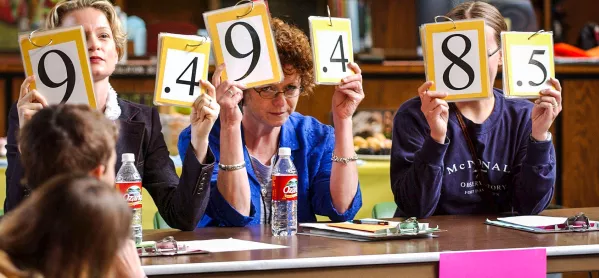Final data has been released for the 2023 GCSE and A-level results.
The data, which was released provisionally in the autumn, confirms that the disadvantage gap at GCSE increased to the highest since 2011 at 3.94 (up from 3.84 in 2022).
At A level, the figures show that the average grade result was a B-, down from a B in 2022 but up from a C+ in 2019.
The data also reveals multi-academy trust results for the first time - showing results for converter and sponsored academy pupils compared with performance for schools overall.
The 2023 exams marked the end of Ofqual’s return to pre-pandemic grading, which saw an overall fall in grades in exams sat in 2023 compared with the previous two years.
The final data released today is broadly similar to the data from the autumn, with some small changes.
Multi-academy trust results
The data released today includes new data on MATs eligible for inclusion in performance tables.
MATs with at least three academies with results at key stage 4 were included as long as those academies were part of the organisation for at least three academic years.
There were 1,180 MAT schools eligible for inclusion, and 848 that did not meet this criteria.
Across all the eligible MAT schools, 42.8 per cent of pupils achieved grade 5 or above in English and maths at GCSE, down from 47.3 per cent in 2022 and in line with the overall trend this year, which saw a drop in students achieving higher GCSE marks owing to the reset of grading boundaries to pre-pandemic levels.
When all MAT schools are included, 44 per cent of pupils achieved grade 5 or above, compared with 48.8 per cent in 2022.
Across all school types, 45.3 per cent of pupils achieved grade 5.
At A level, the average point score (APS) for all MAT institutions was 33.93 for 2023, down from 37.67 in 2022.
The APS for all school types at A level was 35.29 in 2023.
The MAT results for both GCSEs and A levels could not be directly compared with pre-pandemic results as data on the percentage of pupils achieving grade 5s and the A-level APS was not made available for MATs in 2019.
Sponsored and converter academies
For converter academies, 48.1 per cent of pupils achieved a grade 5 or above in their English and maths GCSE, compared to 36 per cent of pupils in sponsored academies.
The average APS at A level was 34.77 at converter academies, compared to 30.48 at sponsored academies.
The DfE cautioned the comparison of MAT school data with all school performance data last year, as MATs vary significantly in their composition and the performance of schools before they joined MATs.
Regional divides in results
The results showed that regional divides in GCSE and A-level results remain across England. London continues to outperform the rest of the country, with 54.1 per cent of pupils achieving grade 5 in English and maths at GCSE.
At the other end of the scale, just 41.7 per cent of pupils in the North West and 41.9 per cent in both the North East and the West Midlands achieved the same level in their GCSE exams last year.
London and the South East also score slightly higher than other regions at A level, but the gaps are smaller.
For the latest education news and analysis delivered directly to your inbox every weekday morning, sign up to the Tes Daily newsletter




